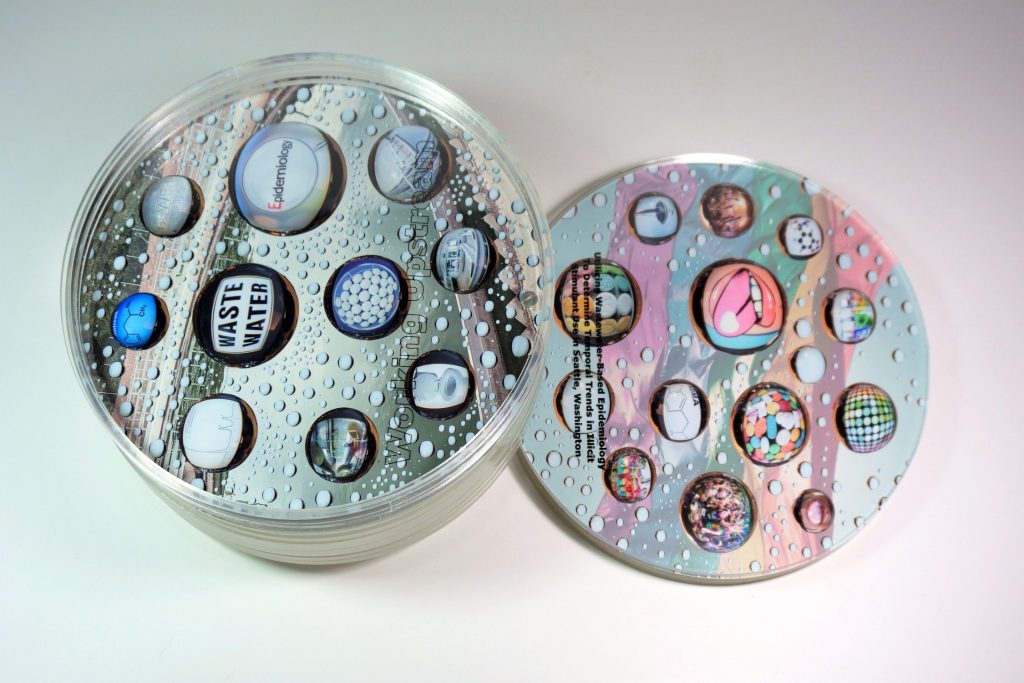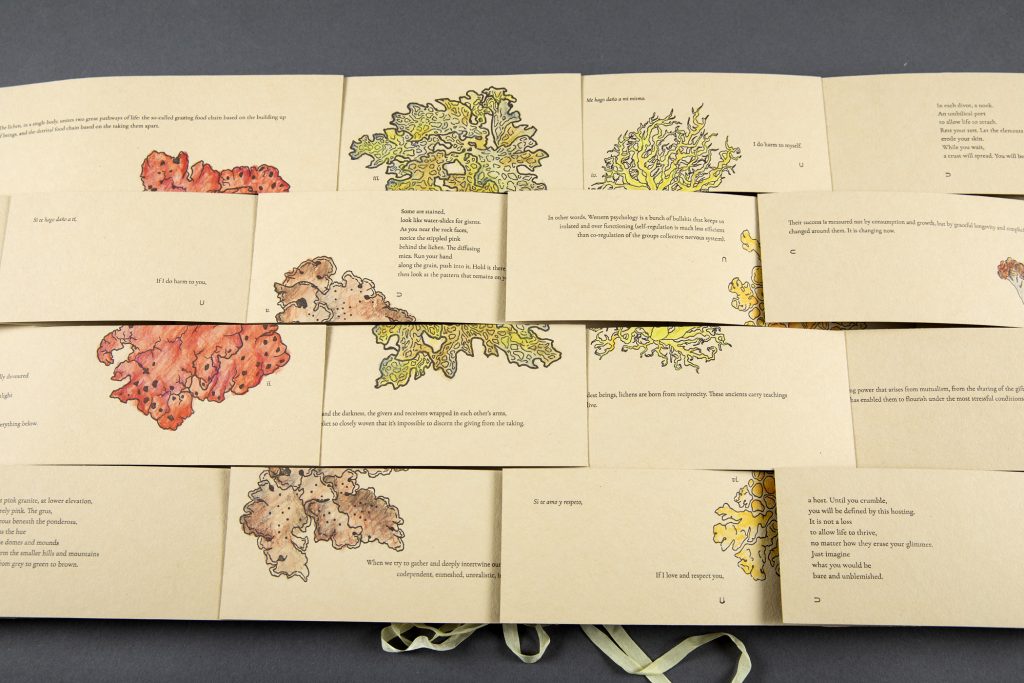For many of you visiting this site, the concept of an artists’ book might be a new one. What do we mean by an artists’ book? Are they pretty coffee table books? Books about art? Books that belong to an artist? Artists’ books are often difficult to describe.
One of the best definitions comes from the Smithsonian Libraries and Archives. In a blog post about their collection, the authors define an artists’ book as:
“A medium of artistic expression that uses the form or function of “book” as inspiration. It is the artistic initiative seen in the illustration, choice of materials, creation process, layout and design that makes it an art object. What truly makes an artist’s book is the artist’s intent, and artists have used the book as inspiration in a myriad of ways and techniques, from traditional to the experimental.” (https://blog.library.si.edu/blog/2012/06/01/what-is-an-artists-book/#.X5so4YhKg2w
Over the years, a running list of comments from students and colleagues about artists’ books help put into context the impact of this medium:
“Artists’ books give voice to often forgotten or passed over issues”
“They allow for a personal way of discovery”
“They help you process ideas in new ways”
“They force you to interact and engage in ways a traditional book does not”
“They are a personal and intimate form of expression”
Artists’ books, like the ones in this exhibition, serve as powerful vessels for telling stories. They can challenge us to rethink and reframe our understanding of science and offer new perspectives and indeed, tell stories in new ways. Scientists publish their work in scientific journals in a way that seems inaccessible for many readers. Learning about science through art is a way to engage and communicate with a broader audience.
Whether the focus is the content, images or format, artists’ books are vehicles for artistic and personal expression. Contemporary book artists take their inspiration from the past while utilizing new techniques and technology to create unique works of art.
Evidence of art in books can be seen in the illuminated manuscripts of the medieval era, the illustrated work of 18th century artist William Blake, and in the work of 19th and early 20th century fine printed books, such as those of the Arts & Crafts movement. The rise in popularity, in creating what we now define as an artist’s book can be linked to a combination of new technologies and social movements. Artists in the 50’s, 60’s, and 70’s embraced what were, at the time, new technologies, such as offset printing and copy machines to create easily reproduced and inexpensive books and artist manifestos. This early movement was about spreading messages in a democratic manner and addressing challenging issues.
Today’s book artists embrace both traditional and new formats, structures, and materials, often collaborating with others to create works of art that inspire and challenge the reader/viewer to engage with the content.
In Science Stories, you can see these many ideas reflected in each of the artists’ works.
All of the artists used images, innovative book structures, and tactile materials to seduce their audiences to engage in a dialog about issues raised by the scientists’ research. But they went about it in different ways. For example, in Ice Crystals of Antarctica, Cirrus Clouds, Tahoma Reliquary, the Bark Beetle Books, and Working Upstream, the artists have made the scientists’ specific research and the questions it poses more visible. In The Flow of Water and Striped Plateau Lizard, the artists stayed true to the scientists’ work but simplified its complexity. In Connections: The Willow and the Mountain, Vorticella convallaria: 1676 & 2020, and Castor and Sapient, the artists have placed the scientist’s specific research in a much broader historical context. Some of the artists’ books such as Bound/Unbounded and Pangolin Pandemic place the scientific research in the context of the 2020 COVID19 Epidemic and political turmoil. Enmeshed and Whose Streets? use scientific observations as metaphors to improve human relationships. Finally, Castor and Sapient, The Making of a Meadow, The Pacific Northwest Native Plant Website and Magic Books, and Whose Streets? go beyond the research to suggest ways to resolve human alienation from nature.
One idea important to many book artists is that the form of the book should reflect its content. For example, in Jim Oker’s Working Upstream, he draws attention to Professor Dan Burgard’s research on wastewater epidemiology.

Oker writes, “Through the Working Upstream book project, book designer, Suze Woolf and I strove to explore the nature of this work and the issues it raises through images that evoke the notion of seeing aspects of the world in and through water. Water can become a lens through which the world can be seen, both figuratively and literally.” The book’s form and materials also makes reference to a scientist’s microscope lens. In discussions of this work, viewers will see a way of studying drug use in a community without violating individual privacy.”
Enmeshed, by artists Anne Greenwood-Rioseco and Daniela delMar draws attention to Lichenologist Lalita Calabria’s view that lichen, rather than being viewed as two symbiotic organisms, is really a complex eco-system of many interdependent organisms. Greenwood-Rioseco and del Mar, use an interwoven book structure, images of lichen, and poems that suggest that this view of interdependency is a metaphor for human relationships. In doing so, they engage us in learning more about lichens, while at the same time questioning our focus on the merits of individualism.

Science Stories addresses the unique collaboration between a book artist and scientist, resulting in new, innovative and inspiring ways to showcase research in highly creative book formats and to reach new audiences. These books are interactive, requiring the viewer to look, touch and feel.
We believe that these artists’ books can be used in the classroom and the community as catalysts for conversation and serve as a starting point to examine points of view and to invite reflection about scientific research.
We are inspired by the artists and the scientists who have worked together to create new ways of understanding through the Science Stories project.
